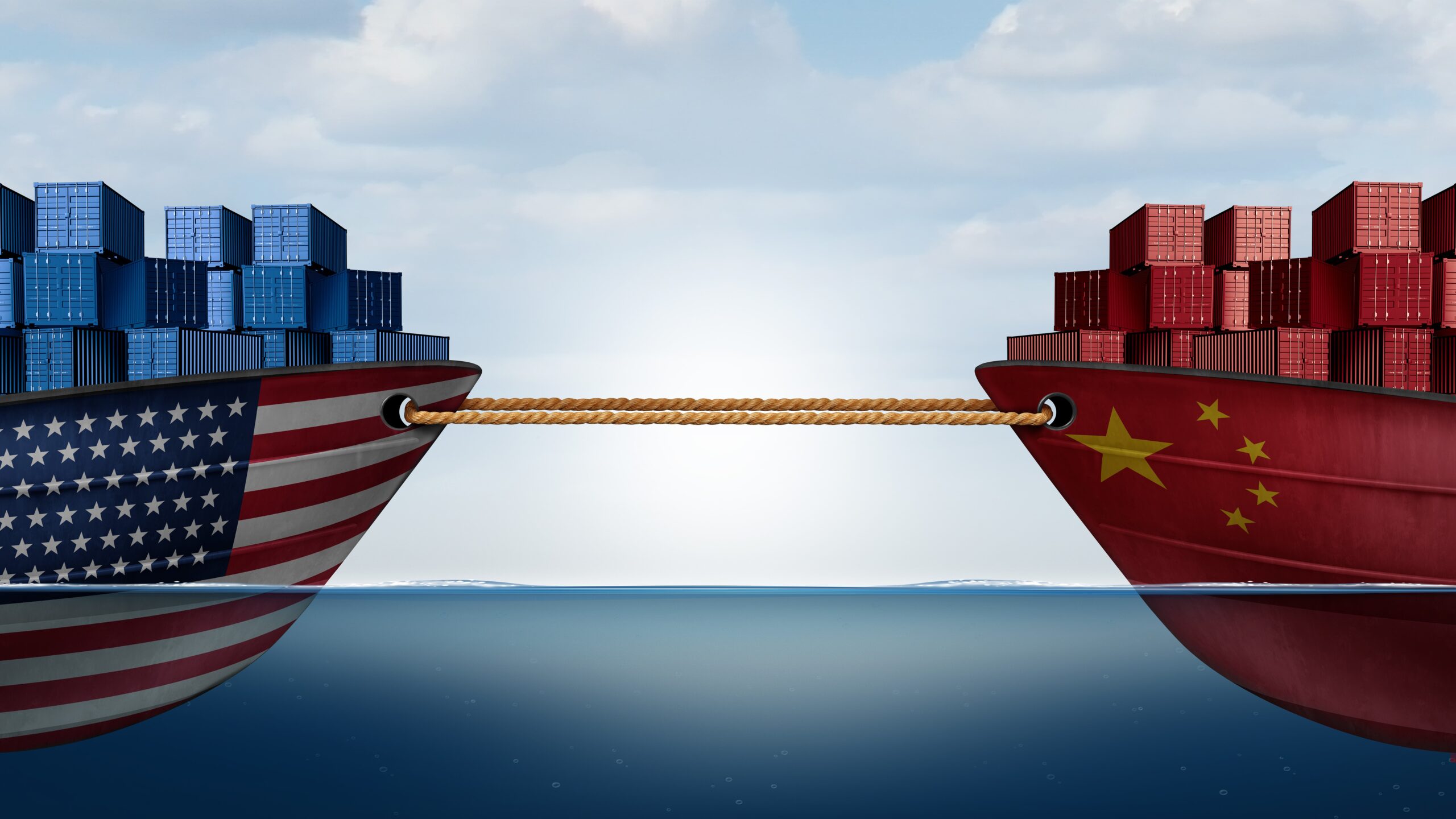The trans-Pacific trade lane connecting the world’s most important countries is a pillar of the global economy. But now it’s becoming an epicenter of supply chain, financial and geopolitical risk.
During the pandemic, ocean container spot rates rocketed upward from approximately $1,000 per 40-foot container to nearly $20,000 last fall before plunging again to $2,720 last week.
Meanwhile, U.S. officials staged visits to Taiwan and took action to further separate the Chinese and American semiconductor sectors. This potent combination of economic, political and military issues will make trans-Pacific business complicated for years to come.
China’s zero-COVID policies and recent tensions over Taiwan have accelerated this confrontation, which could lead to further decoupling between the U.S. and China. But the fundamental issues will likely persist beyond present crises.
The American media coverage of President Xi Jinping’s address to the 20th Communist Party Congress in Beijing last week took note of Xi’s pessimistic tone, warning party members to prepare China for confrontation and crisis. Politico’s Phelim Kine called Xi’s view of U.S.-China relations “increasingly bleak.” Bret Stephens played into the rivalry, writing a cynical op-ed in The New York Times sarcastically thanking Xi for running his country so poorly as to make the United States seem good by contrast.
Counter-signaling Xi’s message of a Chinese “national rejuvenation,” U.S. Secretary of State Antony Blinken was at the same time giving speeches at Stanford University in a tour carefully packaged around a national-strength-through-technology theme. Blinken visited the SLAC National Accelerator Laboratory then spoke at a Hoover Institute event with former Secretary of State Condoleeza Rice, who is now the Hoover Institute director. Most strikingly, Blinken said China was “determined to pursue reunification [with Taiwan] on a much faster timeline” — a statement that made headlines.
Blinken’s visit to Stanford seems to be part of a general effort from the Biden administration to nationalize technology policy and shape the technology industry into an asset that could be useful in a China conflict. Blinken announced his creation of the State Department’s Bureau of Cyberspace and Digital Policy in April. In August, President Biden signed the CHIPS and Science Act, which will spend $280 billion on U.S. semiconductor infrastructure.
China’s zero-COVID policy fighting losing battle
But before we give too much thought to strategic industrial policy, we should recognize the most immediate impact to supply chains and the trans-Pacific trade that the Chinese president’s third term will have: the continuation of Xi’s signature zero-COVID policy for the foreseeable future.
But when the Omicron variant’s greater infectiousness overwhelmed mask and vaccine protections, China kept forcefully applying lockdowns, massively disrupting both its own economy and trans-Pacific trade in general.
Although the Chinese state adapted its tactics on a case-by-case basis — the 2022 lockdown of Shanghai, for instance, kept critical infrastructure like the container terminals operating in ways that the 2021 lockdown of Yantian did not, for example — the governance mechanism was the same. Centralized algorithms looked for signals in endless oceans of public health, location and social media data. As a result, recommended policy actions were increasingly ineffectual and mismatched to realities on the ground.
Tokyo-based freelance writer Dylan Levi King explored the deep roots of this data-driven, centralized electronic command and control system in a recent article for Palladium Magazine called “The Genealogy of Chinese Cybernetics.” King reconstructs the career of Qian Xuesan, author of “Engineering Cybernetics” (1954), from Pasadena, California, to Beijing and his role in building the computer systems and algorithmic models that justified China’s “Great Leap Forward” and the one-child policy.
The consensus of the international financial community, as Bloomberg’s John Authers wrote, is that China’s zero-COVID policy under Omicron has been a disaster casting a pall over the global economy. The Hang Sen Index, which measures the health of the Hong Kong stock market and its largest companies, is down 46% since its Feb. 19, 2021, peak. It is threatening to dip below its 30-year support level. Zero-COVID has created downstream supply chain issues with widespread, long-lasting and unpredictable effects on the earnings of U.S. and European companies, from automakers to big-box retailers.
US-China relations have weakened for more than decade
But whether or not Xi rolls back his zero-COVID policy or not, the future of the trans-Pacific is troubled.
All signs point to escalating confrontation between the United States and China over Taiwan, but the seemingly cheery relationship between the two giants has been shifting — sometimes quickly, sometimes slowly — for years, dating back to the Obama administration.
Recall that one of the reasons given for former President Barack Obama’s withdrawal from Iraq and Afghanistan was to enable the “pivot to Asia,” the continent that Obama identified as the future center of gravity of the global economy in terms of population and gross domestic product. These weren’t just words. Obama moved 2,500 Marines into northern Australia and designed the Trans-Pacific Partnership, a trade agreement with smaller regional powers meant to isolate China.
Former President Donald Trump’s tariffs, which eventually escalated into a medium-sized trade war with China and a series of smaller skirmishes with Canada and the European Union, set off panicked behavior by U.S. importers that roiled the trans-Pacific. Companies accelerated the timelines on their purchase orders, “pulling forward” shipments that were originally scheduled to arrive after new tariffs took effect in order to avoid paying the duties. A logjam of volume increased rates, reduced schedule reliability, congested ports and filled warehouses, especially in Southern California.
Expect more military activity
Although Trump sometimes styled his protectionist tariffs as merely the pragmatic bargaining chips of a consummate dealmaker looking out for the American people, his military moves revealed a deeper, strategic understanding of the trans-Pacific. His administration, for example, emphasized the U.S. Navy’s ability to secure vital trade routes. Navy patrols in heavily trafficked areas and freedom of navigation exercises increased, placing additional pressure on those operations to perform.
When the Navy looked sloppy, heads rolled. In summer 2017, the U.S. Seventh Fleet, a forward-deployed and based in Yokosuka, Japan, and centered on the USS Ronald Reagan’s carrier strike group, suffered two accidents. The Arleigh Burke-class guided missile destroyer USS Fitzgerald collided with a commercial vessel in July off the coast of Yokosuka. The next month, another Arleigh Burke, the USS John McCain, collided with a commercial vessel near the Strait of Malacca off Singapore. Between the two accidents, 17 American sailors were killed.
Trump’s chief of naval operations, Adm. John Richardson, responded by effectively purging the Seventh Fleet and the larger U.S. Pacific Fleet. The Navy fired or retired the destroyer commanders and executive officers, as well as commander of the Seventh Fleet, Adm. Joseph Aucoin. Then Richardson told Adm. Scott Swift, commander of the Pacific Fleet (of which the Seventh is a part), that he wouldn’t be considered for promotion to the Indo-Pacific Command, so Swift announced his retirement.
The point had been made: U.S. Navy leaders were personally responsible for keeping up with the heavier demands made on security operations in vital trans-Pacific trade lanes.
Beginning in the Obama administration and continuing through the Trump and Biden administrations, the United States has exhibited a growing awareness of the trans-Pacific as not only a trade conduit but also a theater for competition and perhaps conflict. Diplomatic, economic, technological and military steps have been taken that suggest the United States is exploring how it can maintain its interests in the Pacific region without China’s cooperation or consent. The most recent flare-ups are the kind of incidental accelerants that were bound to occur during this more gradual paradigm shift in U.S.-China relations.
Supply chain chaos to ensue
Apart from overt military encounters, I’ll be watching a few key themes going forward: increased volatility in supply chains, in terms of freight volumes; capacity availability and transportation rates; less visibility into China’s economic activity; and a more diverse, less China-centric trans-Pacific trade.
I expect the U.S.-China rivalry to express itself through gamesmanship in a number of spheres, including technology, international law, diplomacy, trade practices and military posture. The uncertainty and chaos of this changing trans-Pacific paradigm — from decades of decreasing friction and lower costs to a new trend of increasing friction and higher costs — will drive unpredictable and disruptive shipper behavior similar to that seen in 2018, 2020 and 2021. Stockouts will be followed by inventory gluts and vice versa, as importers pay too much to move their goods that are stored too long and arrive too late, compressing gross margins.
At the same time, outsider observers will likely see less of China’s real economic activity. Last year, China cut off foreign access to automatic identification system (AIS) data, preventing companies from seeing the real-time location of commercial vessels in Chinese waters. Official reports on economic activity coming out of Shanghai during the last COVID lockdown were anything but transparent, and much Western analysis relied on anecdotes and alternative data sources.
Leland Miller, the CEO of China Beige Book, a firm that tabulates independent Chinese economic data, said last week that the country was undergoing a “paradigm shift” in its governance and economic models that will complicate its further development, including the end of debt-fueled growth. It will be difficult to track this shift accurately, given the unreliability of official data.
Finally, if the U.S. and China decide to pursue a policy of mutual divestment, we should expect a more diverse, less China-centric trans-Pacific trade. There are other exciting economies in the region that the United States is connected to, including Vietnam, the Philippines, Taiwan, Korea, Japan and Indonesia. Eastbound freight flows may have more widely distributed origins as China’s share diminishes. Ports like South Korea’s Busan, Malaysia’s Port Klang, Taiwan’s Kaohsiung and Japan’s Yokohama could become relatively more important.
The change in network structure could threaten the stability of the container-ship alliances that control capacity in the trans-Pacific and make the 20,000-plus twenty-foot equivalent unit mega-ships built to serve the largest ports harder to fill and less competitive. Capacity could structurally loosen on what are now the densest lanes, like Shanghai to Los Angeles, while slots could be harder to find on more obscure but growing lanes. The upshot here is that even a prudent trade strategy seeking to de-risk China by sourcing goods in other Asian countries will be exposed to knock-on effects from the challenges the U.S.-China trade is fated to face.
Importers and their transportation providers will need to build links between operations teams and strategic planners so that emerging trends in markets can be identified. Tariffs, embargoes and many other forms of economic warfare are potentially on the table.
For 20 years, the trans-Pacific was relatively easy, boring and cheap. Now it’s becoming exciting, difficult and expensive — and will probably stay that way for some time to come.


